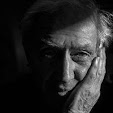The perennial, unanswerable question: what is art? It was posed again for Ann and me this weekend when we toured SAM’s (Seattle Art Museum) massive show of the works of Ai Weiwei. SAM titles its three-venue show – at the downtown SAM, SAM’s Asian Art Museum in Volunteer Park, and SAM’s Olympic Sculpture Park on the waterfront – Ai Rebel. This is the largest exhibition of Ai Weiwei’s work ever curated, much more extensive than the show Ann and I saw eight years ago at the Strozzi Palace, in Florence.
But back then, the same question was posed. I wrote in our
trip log that the show made me “Mindful of Tom Wolfe’s The Painted
Word, for the meanings of Weiwei’s constructions need to be
explained – the reaction to the Thousand Flowers duplicity, the Sichuan earthquake
school collapses, the Red Guard rampages, rejection of veneration, etc. Few of
the pieces stand alone as artistic expressions; all need explanation to be understood
and appreciated."
About ten days ago, Jannie, a Chinese American friend, alerted several of us to SAM’s current show and encouraged us to see it. She opined (I no longer have her exact words) that Ai Weiwei’s work was of enduring quality and importance. We had attended SAM’s premiere member reception and lecture by Foong Ping, SAM’s Curator of Asian Art. That and Jannie’s e-mail got me ruminating once again on what is enduring art; indeed, what is art?
 |
| Ai Weiwei: immigration, porcelain; snake, Sichuan victims' back-packs |
 |
| Oldenburg, Philadelphia |
 |
| Picasso, 1919 |
Are the resulting artworks novelties, tricks, or worthy of being venerated as aesthetic wonders? Is endurance a function of artistic insight and intent? Of aesthetic appeal? Of explanation? Does the medium matter? Braque worked in paint; Chihuly in glass; Oldenburg in outdoor steel constructions; Shostakovich in music; Weiwei in any number of media but dependent upon an army of artisan joiners, stone carvers, ceramicists, welders, mechanics, and so on.
And who is to say: the critic, the professor, the viewer, the collector, the dealer and gallery owner, the speculator and the auction market? Somebody paid $58million for a Koons Orange Balloon Dog. What were they thinking?
Or better to the point: 58 million! What were you thinking!?!
SAM’s Ai Rebel is an important show, perhaps the best SAM has done. Ai Weiwei and his messages are important. The explanations confront and stimulate, much needed in this time when authority and convention need to be challenged. For those of you in the Northwest, the show is must-see; for those of you from away, Ai Rebel is worth coming to Seattle to see (as is our new waterfront). Don’t miss it.



No comments:
Post a Comment